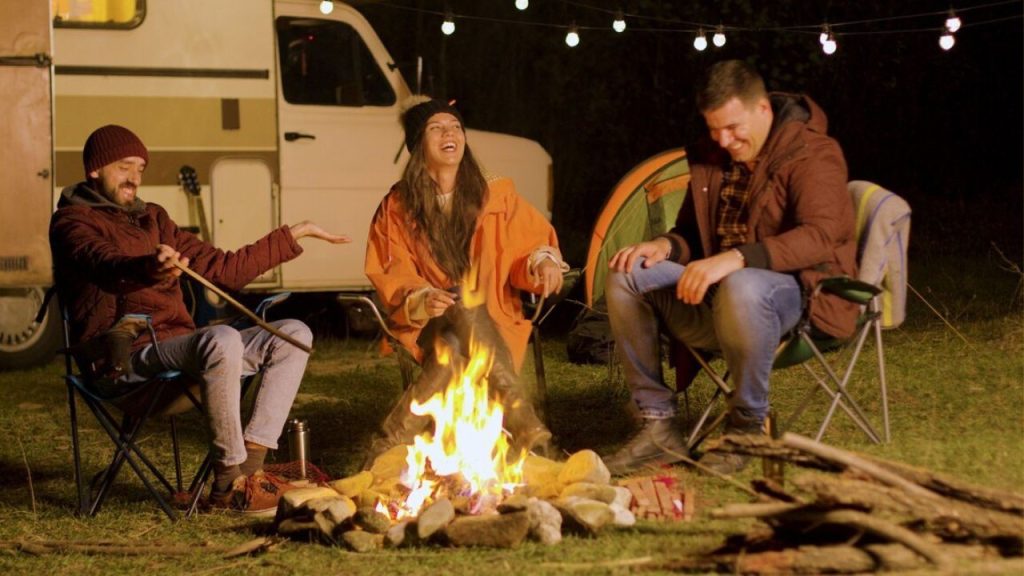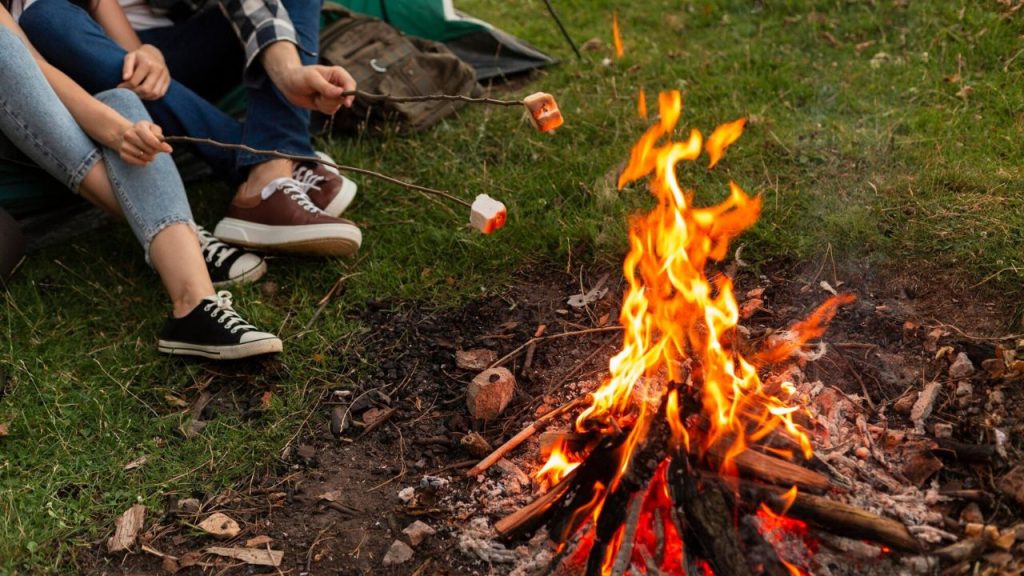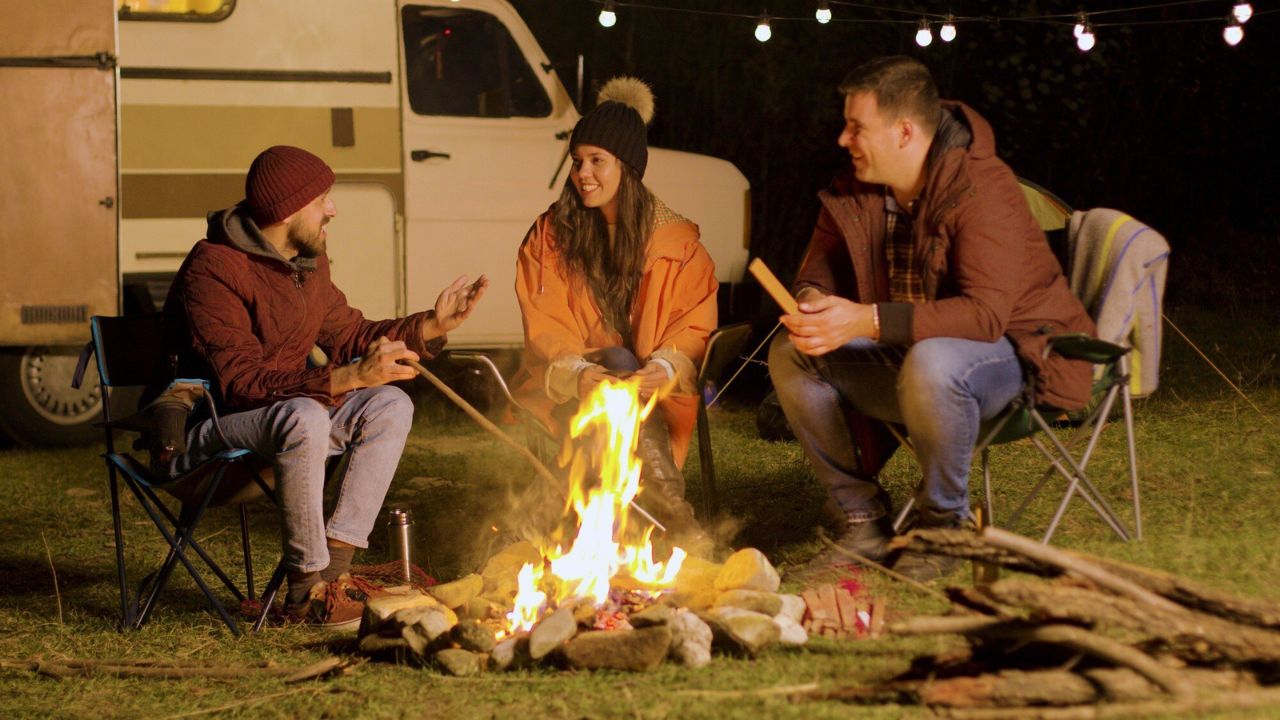As an avid storyteller and outdoor enthusiast, I’ve spent countless nights around campfires, spinning tales that have left my audience enthralled, amused, and sometimes even a little spooked.
Over the years, I’ve learned that the art of telling captivating campfire stories is a skill that can be honed and perfected.
In this article, I’ll share my secrets for crafting and delivering stories that will keep your friends and family hanging on every word.
The Power of Campfire Stories
There’s something magical about gathering around a campfire, watching the flickering flames, and listening to a well-told story. Campfire stories have the power to:
- Create a sense of community and shared experience
- Spark imagination and creativity
- Provide entertainment and laughter
- Pass down traditions and cultural heritage
- Create lasting memories and bonds
Whether you’re telling a spooky ghost story, a humorous anecdote, or a heartwarming tale, the act of sharing stories around a campfire is a timeless tradition that brings people together.
Choosing the Right Story
The first step in telling a captivating campfire story is selecting the right tale to tell. Consider your audience and the mood you want to create. Some factors to keep in mind:
- Age and maturity level of your listeners
- Time of day and overall atmosphere
- Length of the story and attention span of your audience
- Personal interests and experiences of your group
I like to have a few different stories in my repertoire, ranging from lighthearted and silly to suspenseful and thought-provoking. That way, I can adapt to the needs and preferences of my audience.
Crafting Your Story
Once you’ve chosen your story, it’s time to craft it into a compelling narrative. Here are some tips for structuring your tale:
- Begin with a strong hook that grabs your audience’s attention
- Establish your main characters and setting quickly
- Build tension and suspense through conflict and challenges
- Use vivid sensory details to immerse your listeners in the story
- Include dialogue and character interactions to bring the story to life
- Have a clear and satisfying resolution that ties up loose ends
I find it helpful to practice my stories beforehand, either out loud or in my head, to get a feel for the pacing and flow of the narrative.
Setting the Stage

Before you begin your story, take a moment to set the stage and create the right atmosphere. Some tips:
- Make sure everyone is comfortable and can see and hear you clearly
- Build suspense with a dramatic pause or a lowered voice
- Use the natural environment to your advantage (e.g., waiting for a gust of wind or a distant howl)
- Consider incorporating props or sound effects to enhance the storytelling experience
I like to start my stories with a simple phrase like “Picture this…” or “Imagine, if you will…” to signal to my audience that the story is about to begin and to help them visualize the scene.
Using Your Voice and Body Language
Your voice and body language are powerful tools for engaging your audience and bringing your story to life. Some techniques to try:
- Vary your tone, pitch, and volume to convey different characters and emotions
- Use facial expressions and gestures to enhance your descriptions and actions
- Make eye contact with your listeners to create a sense of connection and intimacy
- Pause for dramatic effect or to allow your audience to process a key moment
I find that standing up and using my whole body to tell the story helps me feel more engaged and energized, which in turn helps my audience stay focused and interested.
Encouraging Audience Participation
One of the joys of campfire storytelling is the opportunity for audience participation. Some ways to involve your listeners:
- Ask them to provide sound effects or gestures at key moments in the story
- Encourage them to predict what will happen next or offer their own theories
- Leave room for questions and discussion after the story is finished
- Invite others to share their own stories and experiences
I love it when my audience gets invested in the story and starts to contribute their own ideas and reactions. It creates a sense of shared ownership and makes the experience more interactive and memorable.
Handling Interruptions and Distractions
When telling stories around a campfire, interruptions and distractions are inevitable. Some strategies for handling them:
- Acknowledge the interruption briefly and then gently redirect attention back to the story
- Use humor or a quick aside to diffuse tension or awkwardness
- Be flexible and willing to adapt your story or pacing as needed
- If the interruption is serious or persistent, pause the story and address it directly
I try to remain calm and focused, even when things don’t go perfectly. The most important thing is to keep the storytelling experience positive and enjoyable for everyone involved.
Ending Your Story

The ending of your story is just as important as the beginning. Some tips for crafting a satisfying conclusion:
- Tie up any loose ends and resolve the main conflict or challenge
- Leave your audience with a sense of closure or a lingering question to ponder
- Use a memorable phrase or image to create a strong final impression
- Thank your listeners for their attention and engagement
I like to end my stories with a simple “The end” or “And that’s the story of…” to signal that the tale is complete and to give my audience a moment to process and react.
Frequently Asked Questions (FAQ)
What if I’m not a natural storyteller?
Remember that storytelling is a skill that can be practiced and improved over time. Start with simple, straightforward stories and focus on the basics of pacing, structure, and delivery. With experience and confidence, you’ll develop your own unique style and voice.
How long should a campfire story be?
The length of your story will depend on your audience and the overall context. As a general rule, aim for stories that can be told in 5-15 minutes. If you have a longer or more complex tale, consider breaking it up into smaller sections or saving it for a special occasion.
What if I forget part of the story or lose my place?
If you forget a detail or lose your place, don’t panic. Take a deep breath, pause for a moment, and then continue on with the story as best you can. Most listeners will be forgiving and understanding, and the overall flow of the story is more important than perfect accuracy.
Can I tell scary stories to children?
When telling stories to children, it’s important to consider their age and maturity level. Avoid stories with graphic violence, intense suspense, or mature themes. Instead, focus on tales with a sense of adventure, humor, or magic that will engage and entertain without causing undue fear or anxiety.
How can I find new stories to tell?
There are many resources for finding new campfire stories, including books, websites, and oral traditions. Look for stories that resonate with you personally and that you feel excited to share with others. You can also try adapting classic tales or creating your own original stories based on your experiences and imagination
Conclusion
Telling captivating campfire stories is a wonderful way to connect with others, spark imagination, and create lasting memories. By choosing the right story, crafting a compelling narrative, and using your voice and body language to engage your audience, you can become a master storyteller in your own right.
Remember to be patient with yourself, practice regularly, and have fun with the process. The more you tell stories, the more confident and skilled you’ll become. And who knows? Maybe one day, your tales will be the ones that future generations gather around the campfire to hear.
So, the next time you find yourself around a crackling fire with friends and family, take a deep breath, let your imagination run wild, and begin with those magic words: “Once upon a time…” Your audience will be hanging on every word, and the timeless tradition of campfire storytelling will live on through you.

Hi there! I’m John W. Perkins writer and Founder howmp.com. As a passionate outdoorsman and travel enthusiast, I’ve made it my mission to share my experiences and knowledge with fellow adventurers like you.

